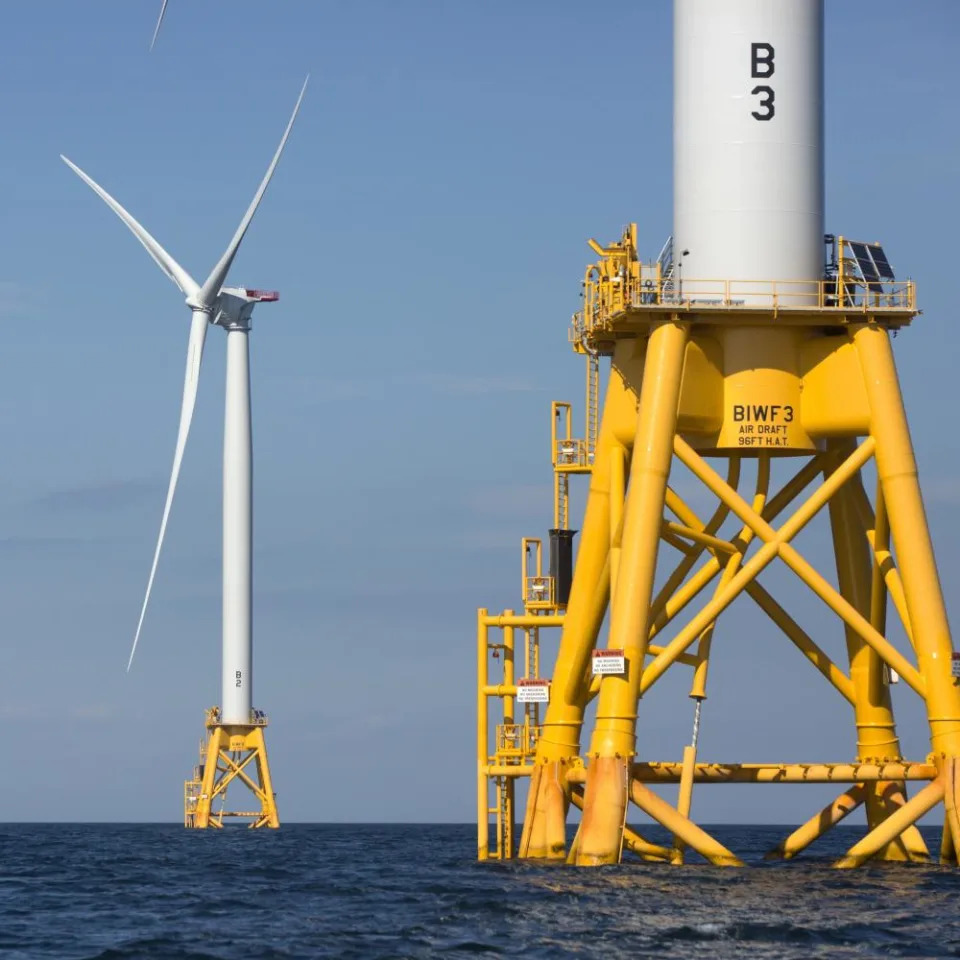Nina Lakhani
Tue, 7 March 2023
Hydrogen is the smallest, lightest and most abundant molecule in the universe. On Earth, it does not occur by itself naturally, but can be separated from water (H2O) or hydrocarbon compounds (fossil fuels) like gas, coal and petroleum to be used as an energy source. It’s already used for rocket fuel, but it is now being pushed as a clean and safe alternative to oil and gas for heating and earthly modes of transport. Political support is mounting with almost $26bn of US taxpayer money available for hydrogen projects thanks to three recent laws – the Inflation Reduction Act, the Bipartisan Infrastructure Act and the Chips Act. Hydrogen is politically hot, but is it the climate solution that its cheerleaders are claiming?
Why all the hype about hydrogen?
The short answer is that the fossil fuel industry sees hydrogen as a way to keep on drilling and building new infrastructure, and has successfully deployed its PR and lobbying machines over the past few years to get policymakers thinking that hydrogen is a catch-all climate solution. Research by climate scientists (without fossil fuel links) has debunked industry claims that hydrogen should be a major player in our decarbonised future, though hydrogen extracted from water (using renewable energy sources) could – and should – play an important role in replacing the dirtiest hydrogen currently extracted from fossil fuels. It may also have a role in fuelling some transportation like long-haul flights and vintage cars, but the evidence is far from clear. However, with billions of climate action dollars up for grabs in the US alone, expect to see more lobbying, more industry-funded evidence and more hype.
What’s the difference between blue, grey, brown, pink and green hydrogen?

A green hydrogen production facility project in Africa at Namaqua Engineering in Vredendal with the University of the Western Cape, South Africa.
Photograph: Esa Alexander/Reuters
Extracting hydrogen is energy intensive, so the source and how it’s done both matter. Currently, about 96% of the world’s hydrogen comes from coal (brown) and gas (grey), with the rest created from nuclear (pink) and renewable sources like hydro, wind and solar. Production of both grey and brown hydrogen release carbon dioxide (CO2) and unburnt fugitive methane into the atmosphere. This super-polluting hydrogen is what’s currently used as the chemical base for synthetic nitrogen fertilisers, plastics and steel among other industries.
Blue hydrogen is what the fossil fuel industry is most invested in, as it still comes from gas but ostensibly the CO2 would be captured and stored underground. The industry claims to have the technology to capture 80-90% of CO2, but in reality, it’s closer to 12% when every stage of the energy-intensive process is evaluated, according to a peer-reviewed study by scientists at Cornell University published in 2021. For sure better than nothing, but methane emissions, which warm the planet faster than CO2, would actually be higher than for grey hydrogen because of the additional gas needed to power the carbon capture, and likely upstream leakage. Notably, the term clean hydrogen was coined by the fossil fuel industry a few months after the seminal Cornell study found that blue hydrogen has a substantially larger greenhouse gas footprint than burning gas, coal or diesel oil for heating.
Green hydrogen is extracted from water by electrolysis – using electricity generated by renewable energy sources (wind, solar, hydro). Climate experts (without links to fossil fuels) say green hydrogen can only be green if new renewable sources are constructed to power hydrogen production – rather than drawing on the current grid and questionable carbon accounting schemes. The industry disagrees: “Strict additionality rules requiring electrolytic hydrogen to be powered by new renewable energy is not practical, especially in the early years, and will severely limit the development of hydrogen projects,” said BP America.
“There may be some small role in truly green hydrogen in a decarbonised future, but this is largely a marketing creation by the oil and gas industry that has been hugely overhyped,” said Robert Howarth, professor of ecology and environmental biology at Cornell University, a co-author of the paper on blue hydrogen.Interactive
Extracting hydrogen is energy intensive, so the source and how it’s done both matter. Currently, about 96% of the world’s hydrogen comes from coal (brown) and gas (grey), with the rest created from nuclear (pink) and renewable sources like hydro, wind and solar. Production of both grey and brown hydrogen release carbon dioxide (CO2) and unburnt fugitive methane into the atmosphere. This super-polluting hydrogen is what’s currently used as the chemical base for synthetic nitrogen fertilisers, plastics and steel among other industries.
Blue hydrogen is what the fossil fuel industry is most invested in, as it still comes from gas but ostensibly the CO2 would be captured and stored underground. The industry claims to have the technology to capture 80-90% of CO2, but in reality, it’s closer to 12% when every stage of the energy-intensive process is evaluated, according to a peer-reviewed study by scientists at Cornell University published in 2021. For sure better than nothing, but methane emissions, which warm the planet faster than CO2, would actually be higher than for grey hydrogen because of the additional gas needed to power the carbon capture, and likely upstream leakage. Notably, the term clean hydrogen was coined by the fossil fuel industry a few months after the seminal Cornell study found that blue hydrogen has a substantially larger greenhouse gas footprint than burning gas, coal or diesel oil for heating.
Green hydrogen is extracted from water by electrolysis – using electricity generated by renewable energy sources (wind, solar, hydro). Climate experts (without links to fossil fuels) say green hydrogen can only be green if new renewable sources are constructed to power hydrogen production – rather than drawing on the current grid and questionable carbon accounting schemes. The industry disagrees: “Strict additionality rules requiring electrolytic hydrogen to be powered by new renewable energy is not practical, especially in the early years, and will severely limit the development of hydrogen projects,” said BP America.
“There may be some small role in truly green hydrogen in a decarbonised future, but this is largely a marketing creation by the oil and gas industry that has been hugely overhyped,” said Robert Howarth, professor of ecology and environmental biology at Cornell University, a co-author of the paper on blue hydrogen.Interactive
What’s at stake?
In addition to $26bn in direct financing for so-called hydrogen hubs and demo projects, another $100bn or so in uncapped tax credits could be paid out over the next few decades, so lots and lots of taxpayers’ money. Fossil fuel companies are also using hydrogen to justify building more pipelines, claiming that this infrastructure can be used for “clean hydrogen” in the future. But hydrogen is a highly flammable and corrosive element, and it would be costly to repurpose oil and gas infrastructure to make it safe for hydrogen. And while hydrogen is not a greenhouse gas, it is not harmless. It aggravates some greenhouse gases, for instance causing methane to stay in the atmosphere for longer.

The first offshore wind farm in the US began operations in late 2016 off Block Island in Rhode Island. Photograph: Michael Dwyer/AP
“This is a once-in-a-generation opportunity to invest in actual zero-emission solutions, but could be a disaster if the federal government pours scarce resources into infrastructure and technologies that could make the climate crisis worse and cause further public health harms,” said Sara Gersen, clean energy attorney at Earthjustice. “Sowing confusion about hydrogen is a delay tactic, and delay is the new denialism.”
Is there any role for hydrogen in a decarbonised future?
Yes, but a limited one – given that it takes more energy to produce, store and transport hydrogen than it provides when converted into useful energy, so using anything but new renewable sources (true green hydrogen) will require burning more fossil fuels.
According to the hydrogen merit ladder devised by Michael Liebreich, host of the Cleaning Up podcast, swapping clean hydrogen for the fossil fuel-based grey and brown stuff currently used for synthetic fertilisers, petrochemicals and steel is a no-brainer. The carbon footprint of global hydrogen production today is equivalent to Germany’s annual greenhouse gas emissions, so the sooner we swap to green hydrogen (created from new renewables) the better. This could also be useful for some transportation, such as long-haul flights and heavy machinery, and maybe to store surplus wind and solar energy – though none are slam dunks for hydrogen as there are alternative technologies vying for these markets, said Liebreich.
But for most forms of transport (cars, bikes, buses and trains) and heating there are already safer, cleaner and cheaper technologies such as battery-run electric vehicles and heat pumps, so there’s little or no merit in investing time or money with hydrogen. Howarth said: “Renewable electricity is a scarce resource. Direct electrification and batteries offer so much more, and much more quickly. It’s a huge distraction and waste of resources to even be talking about heating homes and passenger vehicles with hydrogen.”
No comments:
Post a Comment